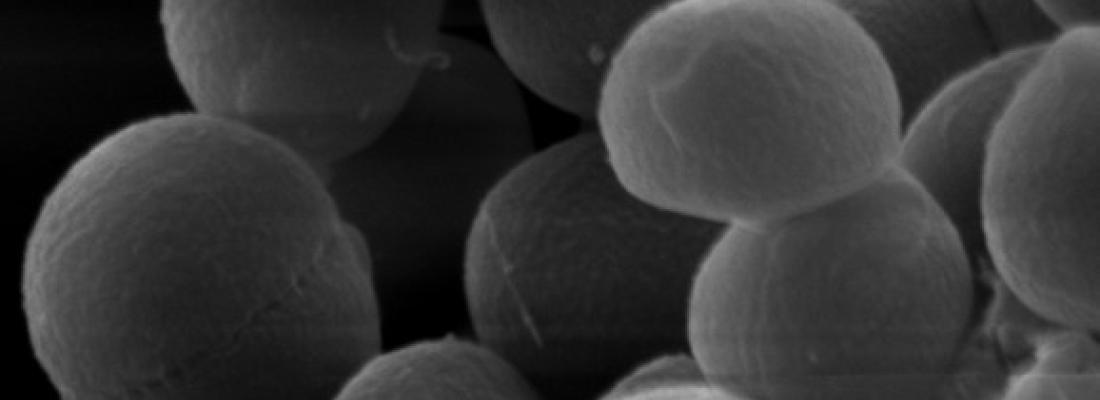Food, Global Health Reading time 2 min
When bacteria adapt to new antimicrobials
Published on 17 December 2019

Whether the outcome is successful or not, the development of new antimicrobials to fight the alarming rise of antibiotic resistance always comes with considerable medical and socio-economic challenges. Staphylococcus aureus is an opportunistic pathogenic bacterium found both in humans and animals. Risks associated with the infections caused by these bacteria originate, in part, from their ability to escape common antibiotics, by mutating, for example. Anti-FASII are molecules currently being developed to target fatty acid synthesis pathway enzymes, essential components of the bacterial membrane. This choice is based on the hypothesis that S. Aureus membrane is composed of the bacterium's own fatty acids. Several studies certify that anti-FASII are effective against S. aureus infections.
In a new study, researchers point to a flaw in this thesis, stating that, during an infection, staphylococci can bypass anti-FASII antibiotics and multiply. How do we interpret these contradictory results among so many publications that attest to the effectiveness of anti-FASII? A key element is the methodology of the experimental models used. In previous protocols, anti-FASII were administered within minutes to a few hours post-infection. This period is too short and does not reflect real bacteria dissemination conditions in an infected person. Patients are only treated once the symptoms have started to show, which happens several days after the infection. Between the time of infection and the beginning of treatment, bacteria adapt to their environment (blood and tissue).
During their research, the scientific team discovered that in an environment mimicking the physiological conditions of infection, S. aureus survives anti-FASII treatments and it is only vulnerable to them in laboratory cultures. Host environments lower S. aureus membrane stress, facilitating the utilization of any available fatty acids. Bacteria fatty acid synthesis is no longer needed and, therefore, the inhibition of this process by the anti-FASII becomes superfluous. It is an example of adaptation and not resistance, since the antibiotic does work, but it is inefficient to fight infection.
The percentage of new antimicrobials that make it to the market as therapeutic treatments is low. These results underline the importance of choosing antimicrobial targets that bacteria cannot bypass within the host. It is also imperative to leave enough time between the infection and the administration of an experimental treatment at the time of approval. Implementing these fundamental conditions should help to establish rational and more effective screening protocols for new antimicrobials.
1 Research supported by the DIM-Malinf programme (Ile de France funding), ANR (National funding), and the FRM (Foundation for Medical Research).
2 Read the press release from 5 October 2016: http://presse.inra.fr/en/Press-releases/Staphylococcus-aureus
|
Publication Permissive Fatty Acid Incorporation in Host Environments Promotes Staphylococcal Adaptation to FASII Antibiotics, Kénanian et al., Cell Reports (2019) https://doi.org/10.1016/j.celrep.2019.11.071 |
